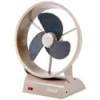Sleeping Bag Materials
and
Construction
How the sleeping bag is made and what it is made of is another critical determining factor on how well your sleeping bag functions.
Sleeping Bag Shells
The higher the thread count of a camping sleeping bag’s fabric, the more wind and water resistance it offers. The more high-tech shell materials will keep the sleeping bag’s fill much drier and will prevent air movement through the fill, helping it to insulate better. There are also special treatments that are used to make sleeping bag fabrics more water resistant. One such treatment is called DWR (Durable Water Repellant).
Most sleeping bag shells available are made of polyester or nylon. These fabrics are tightly woven and very light. Ripstop fabric can be made with polyester or nylon and is quite popular because of it’s durability. Dryloft is the most expensive sleeping bag material, followed by microfiber and plain nylon and polyester.
Polyester fabrics can repel water better than nylon. Polyester is heavier than nylon however. Polyester ripstop and polyester taffeta are two variations of polyester fabric.
The nylon shells used by most manufacturers have a coating of DWR. It provides some measure of water resistance, and the tight weave of the nylon provides good wind resistance. Ripstop nylon provides a more durable sleeping bag material by adding reinforced threads. Nylon taffeta is silky smooth to the touch, but not nearly as durable as ripstop.
Microfiber fabrics are lighter and have a tight construction that helps them to repel water. They have good breathability. The microfiber shells offer a better water resistance than most other fabrics and are windproof. The microfiber shells are less water resistant than Dryloft.
Gore-Tex fabric isn’t usually recommended for sleeping bags because it doesn’t breathe sufficiently to allow moisture to escape to the outside of the bag. Dryloft is also made by gore text is more breathable and more highly water resistant than most micro fibers. It is the most weather and water resistant shell material. A smaller percentage of sleeping bags are made with gore-tex or dryloft shells.
Your choice of a sleeping bag shell should be based on how you are going to use your bag. For three season use inside a camping tent, in mild conditions, you should do fine with a less expensive nylon or polyester shell. If you will be in more rough and wet conditions the microfiber or Dryloft may be the best choice.
Sleeping Bag Linings
The sleeping bag’s lining is the next important consideration. Most of the higher quality, high end sleeping bags will have a silky, smooth nylon taffeta lining. But the less expensive, non-technical bags generally have a polyester cotton lining. Your sleeping bag will be far more comfortable if the lining fabric is slick enough to keep it from snagging at your clothes and twisting the bag while you are sleeping. Some particular slippery fabrics have a special treatment for more comfort against bare skin; however this feature is mostly unneeded. Your bag will stay much cleaner if you always wear some clothing while in your sleeping bag.A dark colored lining in your sleeping bag will be useful. It will absorb heat better and will help the sun dry your bag dry out faster if it happens to get wet.
Fleece liners are available to be purchased separately. They can be inserted inside your sleeping bag for added softness, warmth, and comfort. It is just like adding an extra blanket to your bed. You can also makeshift a liner by attaching a blanket to the inside of your sleeping bag with safety pins. A sleeping bag liner can add about 15 to 20 degrees of additional warmth to your sleeping bag.
Sleeping Bag Insulations
There are two basic kinds of sleeping bag insulation, natural down or man-made synthetic. Which kind of fill to get is a big decision to make, especially for beginning campers. Should you invest in a high quality, fluffy down bag, or get a less expensive sleeping bag that is filled with man-made fibers? Some tips are provided here on the difference between down and synthetic fills.
The insulation or “fill” of a sleeping bag is a significant feature of your bag.
It greatly affects a sleeping bags performance under different weather
conditions. Most sleeping bag fill is made of synthetic fibers or duck or goose
down.
All of the different kinds of fills are specially designed to catch and hold “dead air.” The more air that the insulation can trap and hold; the warmer the insulation will be for each pound of weight. The insulation is sandwiched between the fabrics of the shell and the lining. Manufacturers use a variety of different methods to fill the bag, including enclosed channels, layers, and baffles.
Synthetic Sleeping Bag Insulation
Synthetic sleeping bag insulation is constructed with man-made fibers that have
many excellent qualities. It cost less, is more washable, can be almost as warm
as down, and is more compatible with wet weather than natural down.
Down Sleeping Bag Insulation
Down sleeping bag insulation has a higher warmth to weight ratio than any
man-made synthetic on the market today. Down is very light, warm, compressible,
luxurious, and expensive. If you want to travel light, with a small pack, a down
sleeping bag is ideal.









